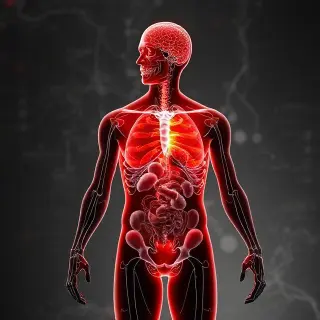Scylex Lab
23-Jun-2025
Obesity, Metabolic Genes, and Fat Oxidation Pathways
Obesity is often oversimplified as a matter of calories in versus calories out. But dig deeper, and you’ll find that cellular metabolism, fatty acid oxidation (FAO) in particular, plays a pivotal role in energy balance, exercise response, and weight regulation.
FAO is the mitochondrial process that breaks down fatty acids to use them for energy. When this system runs smoothly, it supports weight maintenance and metabolic flexibility. But when disrupted, often due to genetic variations, it can contribute to fat accumulation, fatigue, and insulin resistance.
Fatty Acid Oxidation and Obesity
The ability to oxidize fat effectively isn’t the same for everyone. Single-nucleotide polymorphisms (SNPs) in FAO-related genes can influence how efficiently we use fat as fuel, how our body responds to exercise, and even how we store fat.
Here are four key genes that shape one’s fat metabolism: CD36, CPT, ACS, and FABP. These genes affect FAO, energy production, and weight regulation.
CD36
CD36 helps transport long-chain fatty acids into cells. A common SNP, rs1761667, is significantly associated with T2DM and is a biomarker for obesity. This SNP can reduce the expression of CD36, slowing fatty acid uptake and reducing energy availability during exercise. Individuals with this variant may experience lower endurance and a higher tendency to store fat, especially with high-fat diets.
CPT1A/CPT2
Carnitine Palmitoyltransferase 1 and 2 are enzymes that shuttle fatty acids into the mitochondria. Mutations in CPT1A are linked to impaired fat oxidation and increased risk of obesity, particularly in those with low carbohydrate intake. Reduced CPT activity limits fat burning and increases fat storage, especially during fasting or endurance exercise.
ACSL (Acyl-CoA Synthetase)
ACSL enzymes activate fatty acids so they can be used in the FAO pathway. Variants in ACSL1 and ACSL5 affect how fats are processed and stored. Individuals with these SNPs may have elevated triglyceride levels, especially on high-fat diets. Altering macronutrient distributions and fat quality are important considerations for this population.
FABP
Fatty Acid Binding Proteins (FABPs) bind and shuttle fats inside cells, making them essential for lipid regulation. Certain polymorphisms in FABPs can reduce efficiency in fat transport and oxidation. This SNP has been linked to increased body fat, inflammation, lipid metabolism, cardiovascular disease, and impaired insulin sensitivity.
Genes, Exercise, and Personalized Weight Management
Not everyone sees the same results from the same exercise regimen, and this is likely in large part due to genetic variants. People with SNPs that impair FAO may not oxidize fat efficiently during moderate or high-intensity workouts. This limits energy production and interferes with weight loss efforts. These individuals often benefit from:
- Targeted aerobic training: low to moderate intensity for longer durations
- Avoid fasted workouts; include snacks prior to cardio
- Add resistance training for improved insulin sensitivity
- Mitochondrial supporting nutrients such as L-carnitine, alpha-lipoic acid, and CoQ10
Genetic testing can help health care providers personalize fitness and dietary strategies for more individualized and sustainable outcomes.
Personalized Nutrition for Fat Oxidation Support
Dietary interventions based on one’s genetics can help better support one’s metabolic health and weight management goals. Here are practical nutrition tips based on FAO-related SNPs:
CD36: Reduce saturated fat in the diet and emphasize the importance of consuming omega-3-rich foods or supplements.
CPT1A: Avoid prolonged fasting and ensure adequate medium-chain triglyceride (MCT) intake.
ACSL: Limit total dietary fat intake, balancing this with a higher protein and carbohydrate diet while monitoring lipids closely.
FABP2: Increase complex carbohydrates and other fiber-rich foods while including foods that help maintain a good balance of omega-6 to omega-3 ratio
Summary
Obesity management is no longer just about willpower or cutting calories, it's about understanding the complete picture of one’s metabolism. Genetic variants in FAO-related genes can reveal why some individuals struggle more with fat metabolism compared to others. It also gives insight into how they can adjust their nutrition, supplements, and activity for optimal weight management results.
Scylex’s advanced nutrigenomic testing empowers you to apply precision nutrition strategies to promote sustainable weight management and metabolic health for your patients.
Written By:
Vanessa Imus, MS, RDN,
Owner of Integrated Nutrition for Weight Loss
https://inutritioncenter.com/about/


